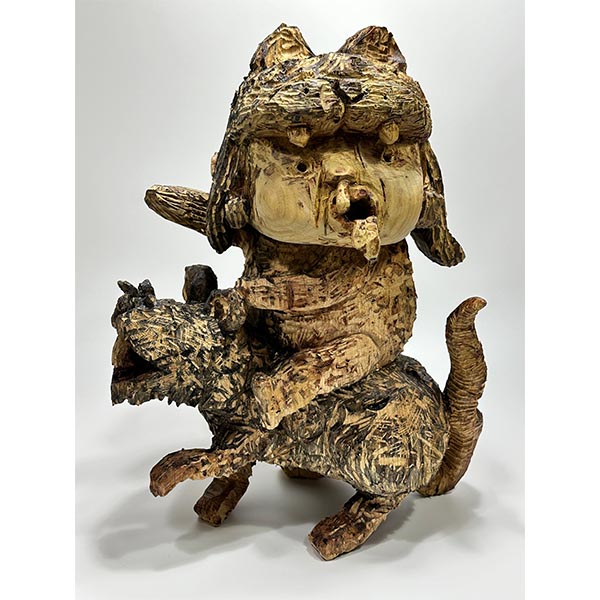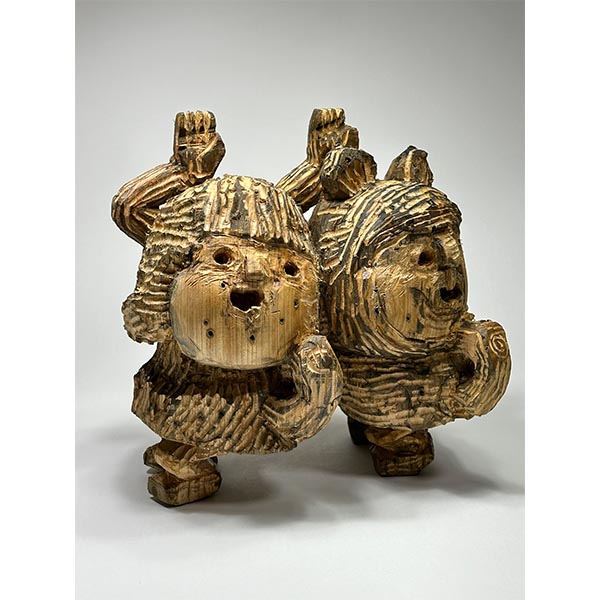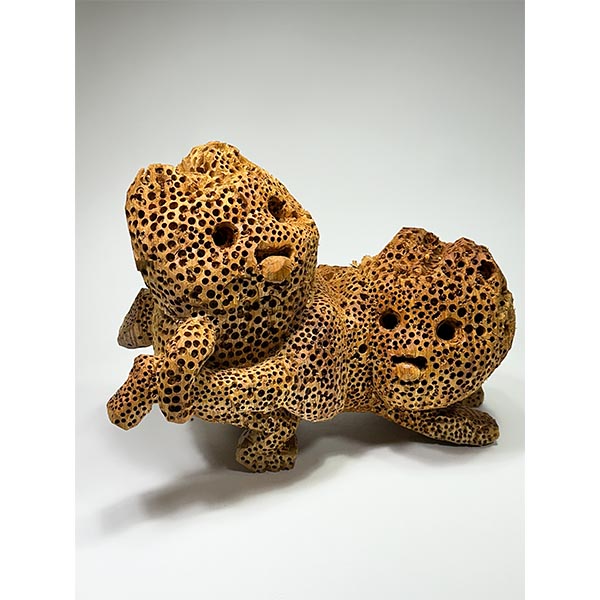HIROSUKE YABE
INFO WORKS INSTALLATION VIEWS CV
Exhibition view HIROSUKE YABE at CONRADS 2019 (PDF)
Hirosuke Yabe, born in Kanagawa in 1972, lives in Yokohama, Japan.
He received a BFA in sculpture in 2002 and continued his studies as a research student at Tokyo Zokei University of Art and Design in 2004.
Yabe cites Eduardo Chillida, Richard Serra, African masks and Mono-ha (an Japanese art movement from the 20th century) as early influences.In 2011 the Fukushima nuclear disaster, which deeply shook Japanese society, caused a radical change in his artistic practice. Since 2011, Yabe has mainly used chisels and nata, a special Japanese axe, to work the wood of the zelkova tree. Wood that is left over from the demolition of traditional Japanese buildings, which are often over 100 years old. His work can be understood as a reaction to the Fukushima disaster. With his crudely carved sculptures, Yabe comments the question about the forms of human existence. The absurd in all its variations - grotesque, tragic, melancholic, comic - has been his means of expression ever since. His approach is similar to that of the Theatre of the Absurd, which sought to depict the disorientation of modern manhood as a reaction to the horrors of the Second World War.
The source of his motifs are traditional myths and fairy tales as well as the world of popular manga and anime. His exploration of the anima leads to depictions of animals, humans and anthropomorphic creatures, sometimes individuals, sometimes interacting. As in mythology, fairy tales and animated films, Yabe's animal creatures symbolize human characters and behaviour. Some of his motifs are familiar to the Western visual canon, while others require a knowledge of Eastern mythology and Japanese popular culture in order to be understood. nevertheless, his works have an immediate charisma that is effective across cultures.
In his anti-naturalistic, emotionalized design in combination with motifs from Japanese popular culture, there are parallels to Takashi Murakami, who coined the term "Superflat" for his art. Murakami's Japanese answer to Pop Art, which dominated everything in the West - especially in the USA in the 1960s. The Japanese art critic Noi Sawaragi coined the term "Japanese Neo Pop" to describe the combination of traditional Japanese art with popular forms of expression from the subculture. Yabe, however, takes a different approach. His crudely crafted yet expressive figures form an exciting contrast to the smoothed, synthetic manga and anime, as well as to the formally rigorous traditional sculpture and, not least, to the Western modernism that influenced his early works.
His wooden sculptures are also associated with the art from the Edo period (1625 - 1868), which was characterized by a preference for expressionist and eccentric motifs. As with the Buddhist monk Enkū (1632-1695), who carved around 120,000 statues as a sculptor, no two Yabe sculptures are the same. Each of his sculptures shows one or other of the many facets of existence, the beauty, the ugliness, the joy, the pain, the comedy, the absurdity – the imponderables of life.
Text: Conrads 2024
Untitled (co226), 2023
Wood, charcoal, persimon tannin juice
56 x 44 x 32,5 cm
Untitled (co227), 2023
Wood, charcoal, persimon tannin juice
32,5 x 31,5 x 22,5 cm



